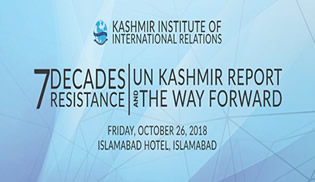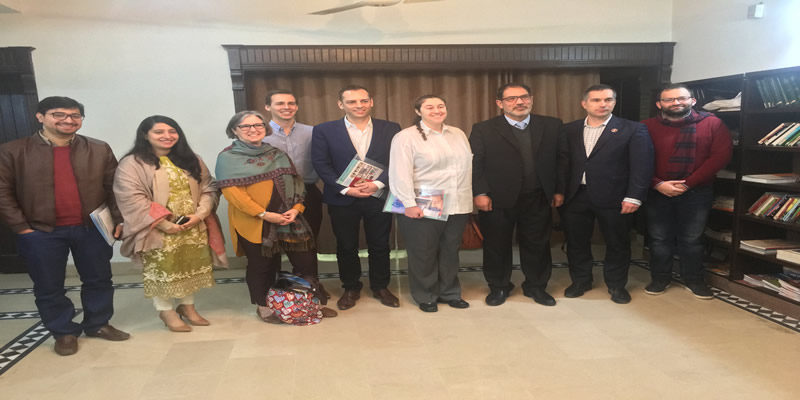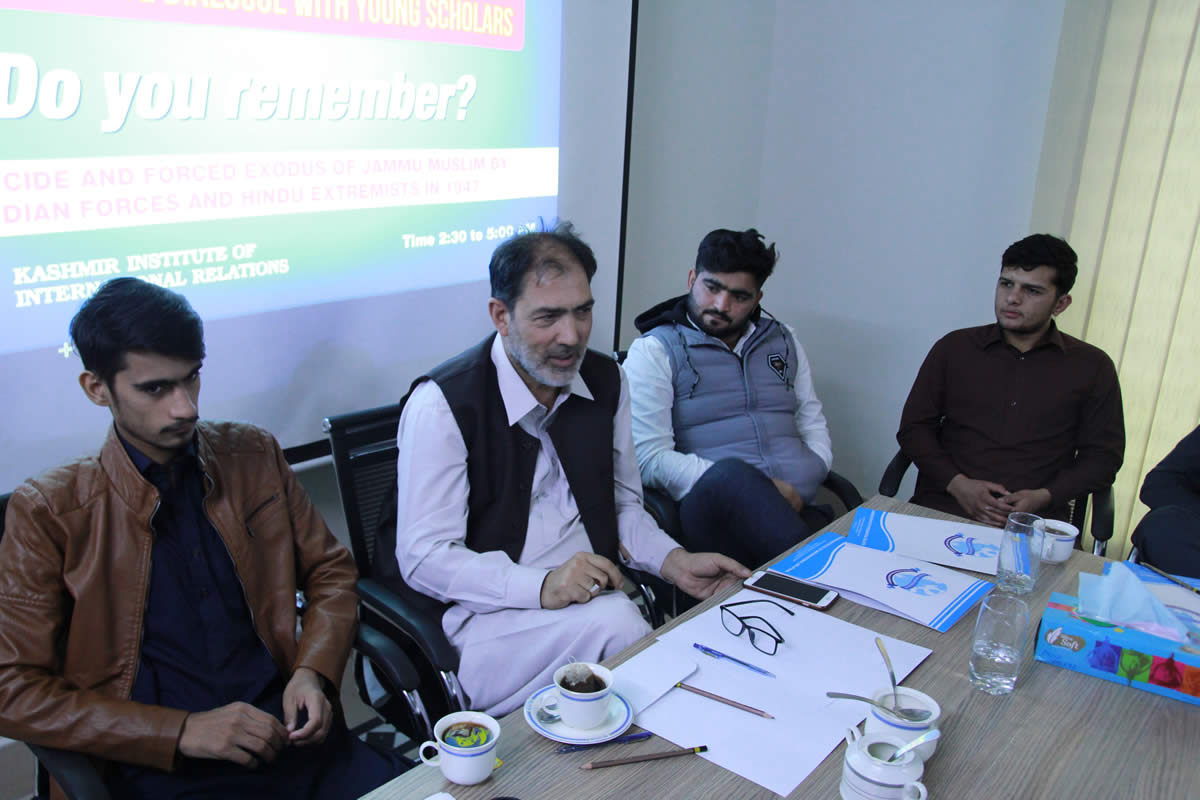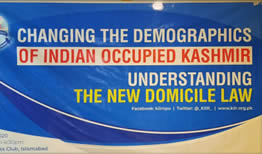Human Cost of the Kashmir Conflict
Human Cost of the Kashmir Conflict
International Day for Elimination of Violence Against Women: A Focus on Indian occupied Kashmir
As the world observes the International Day for the Elimination of Violence Against Women on November 25, it is imperative to reflect on the grim realities faced by women in conflict zones, particularly in Indian-occupied Kashmir. This day serves as a reminder of the persistent violence and discrimination that women endure globally. In Kashmir, the statistics paint a harrowing picture of systemic abuse and violations of human rights. From January 1989 to October 2024, Kashmir has witnessed a staggering number of women subjected to violence. Reports indicate that 22,980 women have been widowed, and 11,265 have faced horrific acts of gang rape or molestation. Additionally, there are over 2500 half-widows—women whose husbands have disappeared during custody of armed forces, leaving them in a state of limbo, both socially and legally.
Altaf Hussain Wani
The situation is further exacerbated by the detention of women activists like Asia Andrabi, Fahmeeda Sofi, Naheeda Nasreen, and many others who have been imprisoned for advocating for the right to self- determination. The legacy of violence against women in Kashmir is punctuated by several mass rape incidents that have occurred over the years, often involving the Indian armed forces. One of the most notorious cases is the Kunan Poshpora massacre, which took place on February 23, 1991. During a search operation, soldiers gang-raped 83 women of all ages, leaving an indelible mark on the community and highlighting the impunity with which such acts are committed. Similarly, the Chhanpora mass rape on March 7, 1990, involved multiple women being brutally assaulted by CRPF personnel, with victims recounting the horror of being dragged from their homes and violated.
The violence did not cease with time; incidents continued to emerge, such as the Wavoosa mass rape on April 22, 1997, where armed personnel violated multiple women, including minors. In another incident on October 5, 1998, a fifty-year-old woman in Doda was raped by a soldier who explicitly stated that her identity as a Muslim justified the violence against her. These incidents reflect a disturbing pattern of gender-based violence that is not only a violation of human rights but also a weapon used to exert control and instill fear within the community.
According to MSF’s “Kashmir Mental Health Survey 2015,” 50 percent of women (compared to 37 percent of men) suffered from probable depression; 36 percent of women (compared to 21 percent of men) had a probable anxiety disorder; and 22 percent of women (compared to 18 percent of men) suffer from post-traumatic stress disorder (PTSD). The impact of such violence extends far beyond the immediate physical and psychological trauma experienced by the victims. It disrupts families, shatters communities, and perpetuates a cycle of violence and discrimination that affects future generations. Women, who are often the backbone of their families and communities, find themselves marginalized and stigmatized, forcing them into silence and
isolation.
On this International Day for the Elimination of Violence Against Women, it is crucial to recognize the resilience of Kashmiri women who continue to fight against these injustices. Activists and organizations were working tirelessly to raise awareness, provide support to survivors, and advocate for justice However, after abrogation of article 370 and 35/A the Indian occupation forces and other authorities like NIA created a culture of fear and intimidation for such activists and organisations by raiding and sealing offices and confiscating all records etc. On the other hand the path to healing and accountability is fraught with challenges, as many women face societal stigma and fear of reprisal for speaking out.
The international community has a vital role to play in addressing the violence against women in Kashmir. It is essential to hold perpetrators accountable and ensure that survivors receive the support and justice they deserve. Advocacy for women’s rights must be at the forefront of peacebuilding efforts in the region, recognizing that true peace cannot be achieved without addressing the systemic violence faced by women. Moreover, it is imperative to amplify the voices of Kashmiri women in global forums, ensuring that their experiences and demands for justice are heard. The narratives of survivors must be prioritized, and their rights must be recognized as fundamental to any meaningful dialogue surrounding the Kashmir conflict.
As we commemorate this day, let us stand in solidarity with the women of Kashmir and around the world who continue to endure violence and discrimination. It is a call to action for governments, organizations, and individuals to work collectively towards a future where women can live free from violence and fear. The elimination of violence against women is not just a women’s issue; it is a human rights issue that requires the commitment of all of society. In conclusion, the International Day for the Elimination of Violence Against Women serves as a critical reminder of the urgent need to address the specific challenges faced by women in conflict zones like Kashmir. Only through sustained efforts, advocacy, and a commitment to justice can we hope to create a world where women are truly free from violence and can thrive in safety and dignity.
Ending violence against women is not just an aspiration—it is a demand for justice that must echo louder than the silence of suffering in places like Kashmir
Revisiting the Jammu Massacre: Echoes of Ethnic Cleansing in 1947
The dead cannot cry out for justice; it is the duty of the living to do so for them. The Jammu Massacre of November 1947 remains one of the most tragic yet under- acknowledged episodes in the history of South Asia. As British colonial rule dissolved and India and Pakistan emerged as separate nation-states, large-scale violence erupted, often targeting religious minorities in both states. The Jammu Massacre, however, stands out for its severity, scale, and implications, which extend beyond regional politics into the fabric of international relations.
Mehr un Nisa
This article unpacks the massacre as an event that highlights the convergence of state-sponsored violence, demographic engineering, and communal discord, and it assesses the massacre’s enduring impact on India-Pakistan relations and the international discourse on self-determination and human rights. This form of geopolitical engineering, while specific to post-partition India, parallels other historical instances of state-driven demographic reordering, such as the Balkan Wars and the Armenian genocide.
In 1947, the princely state of Jammu and Kashmir was in a perilous position. The Hindu Maharaja, Hari Singh, hesitated to join either India or Pakistan, a stance that intensified tensions across the religiously diverse state. The Muslim-majority regions, including Jammu, had growing political movements advocating for alignment with Pakistan, owing to both demographic alignment and political sympathies. This division within the state mirrored broader patterns across the subcontinent, where communal identities were politicized amidst the ideological clash between secular nationalism and religious separatism.
In the Jammu region, where Muslims comprised over 60 percent of the population, tensions mounted as the Dogra administration implemented repressive measures. These included heavy taxation on Muslim-majority districts like Poonch and the exclusion of Muslims from the local militia, exacerbating fears among the local Muslim population. Historians like Alastair Lamb and Victoria Schofield suggest that the Maharaja's refusal to accommodate Muslim grievances or accept their demands for basic representation played a critical role in triggering the revolt in Poonch, which was met with brutal suppression.
The Jammu Massacre exemplifies how domestic policies in post-colonial states can have far-reaching implications for regional security dynamics
As communal violence swept across the subcontinent, the Dogra-led state forces, allied with right-wing Hindu and Sikh groups, orchestrated systematic attacks on Jammu’s Muslims. This strategy bore the hallmarks of what international relations scholars identify as state-sponsored ethnic cleansing: a deliberate attempt by a state actor to alter demographic realities to consolidate political control. In Jammu, state forces leveraged the situation to expel or eradicate the Muslim population forcibly, ensuring demographic and political alignment with India. Reports estimate the death toll between 20,000 and 237,000 Muslims, with nearly half a million displaced.
This episode of ethnic cleansing effectively altered the region’s demographics and continues to influence the geopolitical landscape, with Jammu’s Muslim population remaining drastically reduced today. The massacre also underlines how domestic policies in post-colonial states can have far-reaching implications for regional security dynamics. The forced displacement of Muslims into newly formed Pakistan not only created a refugee crisis but also worsened the political antagonism between India and Pakistan. By entrenching religious divisions, the events in Jammu contributed to the enduring “Kashmir Question,” one of the longest-standing and most volatile territorial disputes in the world.
The Jammu Massacre also raises questions regarding the principle of self-determination, a core tenet in international law. The forcible expulsion of Jammu’s Muslims, who overwhelmingly favored alignment with Pakistan, violated their right to participate in determining the political status of their homeland. Furthermore, the continued division of Jammu and Kashmir between India and Pakistan following the 1948 ceasefire has denied these communities the opportunity for self-governance, despite repeated calls for a plebiscite under United Nations auspice.
The massacre's legacy remains deeply tangled with the political narratives on both sides of the Line of Control, influencing the ongoing ‘Kashmir Question’ and the prospects for peace
The massacre's legacy remains deeply tangled with the political narratives on both sides of the Line of Control (LoC). For Pakistan, the incident exemplifies a broader pattern of oppression against Muslims in Jammu and Kashmir and critiques India’s human rights record in the region. For India, acknowledging such an incident raises questions about state accountability and the secular democratic ideals it aspires to uphold. This duality has rendered the Jammu Massacre a “frozen memory,” acknowledged by survivors and activists but seldom incorporated into official discourse. The massacre also exemplifies how historic grievances can fuel protracted conflicts. The Jammu Massacre has contributed to a broader narrative of Muslim disenfranchisement in Kashmir, fueling resentments that continue to inspire both armed resistance and nonviolent calls for justice.
The Jammu Massacre of November 1947, often referred to as an “invisible genocide. In international relations, forgetting the past adopts unresolved tensions and erodes trust. For Jammu’s Muslims, remembrance is a form of resistance against erasure, as the massacre highlights the perils of ethno-nationalism. If regional stability is to be achieved, a balanced historiography that includes the suffering of all communities, and a concerted effort toward truth and reconciliation, must guide future diplomatic efforts. The Jammu Massacre should not remain a hidden chapter but a reminder that justice and historical clarity are indispensable to achieving enduring peace in Jammu and Kashmir.
Echoes of Silence: Women’s Bodies As Sites of War
The latest report, presented to the UN General Assembly by Dr Alice Jill Edwards the UN Special Rapporteur on torture and other cruel, inhuman, or degrading treatment or punishment, highlights the pressing need for international efforts to address the issue of sexual abuse, being used as an instrument of terror and torture predominantly by government forces in conflict-hit territories. The report puts a spotlight on the systematic use of sexual violence as a strategy in war and underscores its profound impacts on bothindividuals and communities. It also calls for decisive global action and proactive measures for the elimination of violence against women to ensure that those responsible are held accountable. Although women in today’s world face a wide range of challenges, such as gender inequality, forced marriages, and gender-based violence and discrimination.
Altaf Hussain Wan
However, those living in regions marred by conflict have suffered the most from acts of violence. Women in J&K Jammu and Kashmir is among the world’s most dangerous regions where women have suffered disproportionately. The effects of this long-drawn conflict are felt hardest by the Kashmiri women who are more vulnerable to conflict than other segments of society. It has severely affected their physical, mental, and emotional well-being. Among the multiple forms of abuse they face, sexual violence stands out as an egregious assault that has left behind a harrowing legacy in the shape of rape survivors.
The weaponisation of sexual violence in Kashmir is an egregious reality that has largely escaped the attention of local and international observers. According to a survey, 36% of women in the troubled region suffer from anxiety disorders. Since 1989, tens of thousands of Kashmiri women have been widowed or displaced, harassed, raped, and subjected to cruel treatment during interrogations and military operations. Sexual violence, which uniformed men often use as collective punishment against the Indigenous population, goes largely unreported due to social stigmatisation.
Silence over Sexual Violence Despite the gravity of these violations, there has been a significant lack of accountability. Victims often face barriers to justice, including societal stigma, fear of retribution, and inadequate legal frameworks. The UN Special Rapporteur’s call for global action resonates strongly in this context, as it emphasizes the need for international mechanisms to address and prevent sexual torture and to hold perpetrators accountable. The “heinous crime” of sexual violence in conflict is not only a gross violation of human rights but also a formidable obstacle to peace, security, and development.
The UN Deputy Secretary-General Amina Mohammed said, “It has never been more urgent to end the scourge. We must identify innovative and creative strategies, not only to respond to conflict-related sexual violence, but to prevent it, and finally, consign such violations to the annals of history once and for all.” In the context of Jammu and Kashmir, the issue of sexual violence holds a profound significance. The region has witnessed numerous instances where rape and sexual harassment have been employed as tools of oppression and contrasr.
Kashmir’s cases of sexual abuse reveal there is a pressing need for international efforts as well as a need to gear up domestic legal justice systems to ensure accountability
Kunan-Poshpora and Other Cases
The heartrending incidents of violence such as the mass rape that occurred in Kunan- Poshpora in 1991, the double murder and rape in Shopian, and the gang-rape of girl-child Asifa Bano, are some of the most terrifying instances of the horrors that women in Jammu & Kashmir endured. In Kunan-Poshpora, scores of women of all ages were allegedly raped by 4th Rajputana Refiles, and 33 of them testified before the judicial magistrate and divisional commissioner. On April 7, 1991, the New York Times reported the Kunan-Poshpora rape incident under the headline, “India Moves against Kashmir Rebels.” According to the report, on March 5, 1991, villagers complained about the incident to the then-Kupwara District Magistrate, S M Yasin, who visited the village two days later to investigate. “According to a report filed by Yasin,” the article reads, “the armed forces behaved like violent beasts.”
He identified them as members of the 4th Rajputana Rifles and said they rampaged through the village from 11:00 PM on February 23 until 9:00 AM the next morning. The Indian authorities have dismissed the mass-rape charges as “groundless.” No further investigations have been conducted. The Kunan-Poshpora rape case has been buried like thousands of other cases of rights abuse by men in uniform in Kashmir. However, in its 1992 report on international human rights, the United States Department of State rejected the Indian government’s conclusion, saying there was “credible evidence to support charges that an elite army unit engaged in mass-rape… in Kunan-Poshpora”. Similarly, in 2009, the bodies of sisters-in-law, Neelofar Jan and Asiya Jan, were found in a shallow rivulet after an overnight search by their family and local villagers in Shopian.
Evidence in the brutal sexual assault and murders was so badly tampered with that it allowed the Central Bureau of Investigation to conclude that there was no evidence of rape or murder, even though several previous investigations, including a government-appointed commission, had raised pertinent questions about evidence tampering by the security forces. The incident led to 47-day protests in the Shopian district. Nevertheless, the police did not register an FIR until June 7, when public pressure compelled them to comply with court orders. The more recent case of the rape and murder of 8-year-old girl Asifa Bano in 2018, in which two civilians and four cops were convicted, illustrates the ongoing use of sexual violence as a weapon against the local population. These incidents not only reflect a pattern of gender-based violence but also highlight the broader context of human rights violations in the region.
Documentation of Sexual Abuse
In 2018, the Jammu Kashmir Coalition of Civil Society published a report that presents a harrowing examination of the systematic use of torture as a tool of state control in the region. This comprehensive document sheds light on the human rights violations perpetrated by state authorities and records the testimonies of victims who have suffered under oppressive practices. The report is meticulously structured, beginning with a clear introduction that sets the context of the ongoing conflict in Jammu and Kashmir. It effectively outlines the historical backdrop, the legal framework, and the political dynamics that have contributed to the normalisation of torture within the region. The authors have used a mix of qualitative and quantitative data collection methods, including survivor testimonies, medical reports, and legal analyses, to add credibility and depth to their findings.
One of the report’s strengths is its emphasis on personal narratives. By including firsthand accounts from victims of torture, the document humanizes the statistics and legal jargon often associated with human rights reports. These deeply moving accounts offer a comprehensive understanding of the emotional, psychological, and physical suffering experienced by individuals and communities. The report also highlights the broader implications of such practices on societal trust, mental health, and the rule of law. The in-depth analysis of the involvement of the police, military, and judiciary in enabling torture raises critical questions about accountability and the need for systemic reform.
Furthermore, the report calls attention to the lack of effective accountability mechanisms for redress and the culture of impunity in the region. It is crucial that the international community urgently pays attention and takes action to make sure that such terrible acts, which shook the Kashmiri society to its core, are not just acknowledged, but also addressed through comprehensive legal justice and social systems that help victims and hold perpetrators accountable.
Past Events














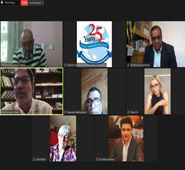
_1627626452.jpg)
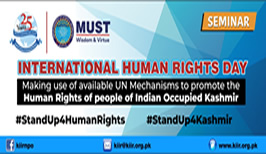
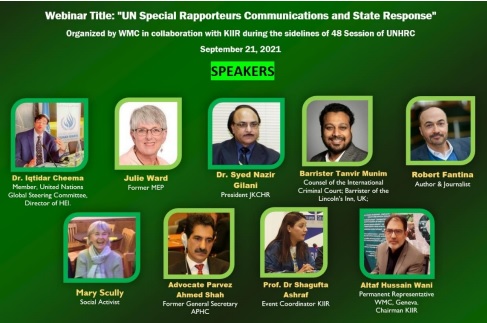
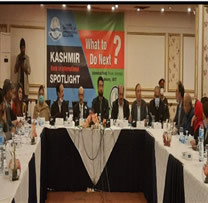

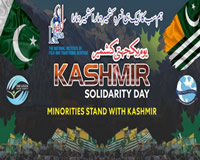
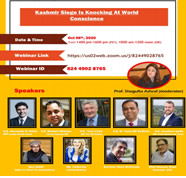
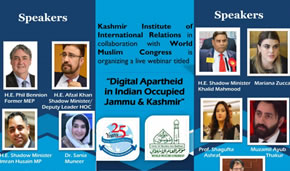

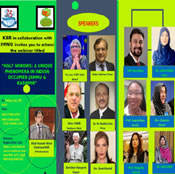

_1627627084.jpg)
